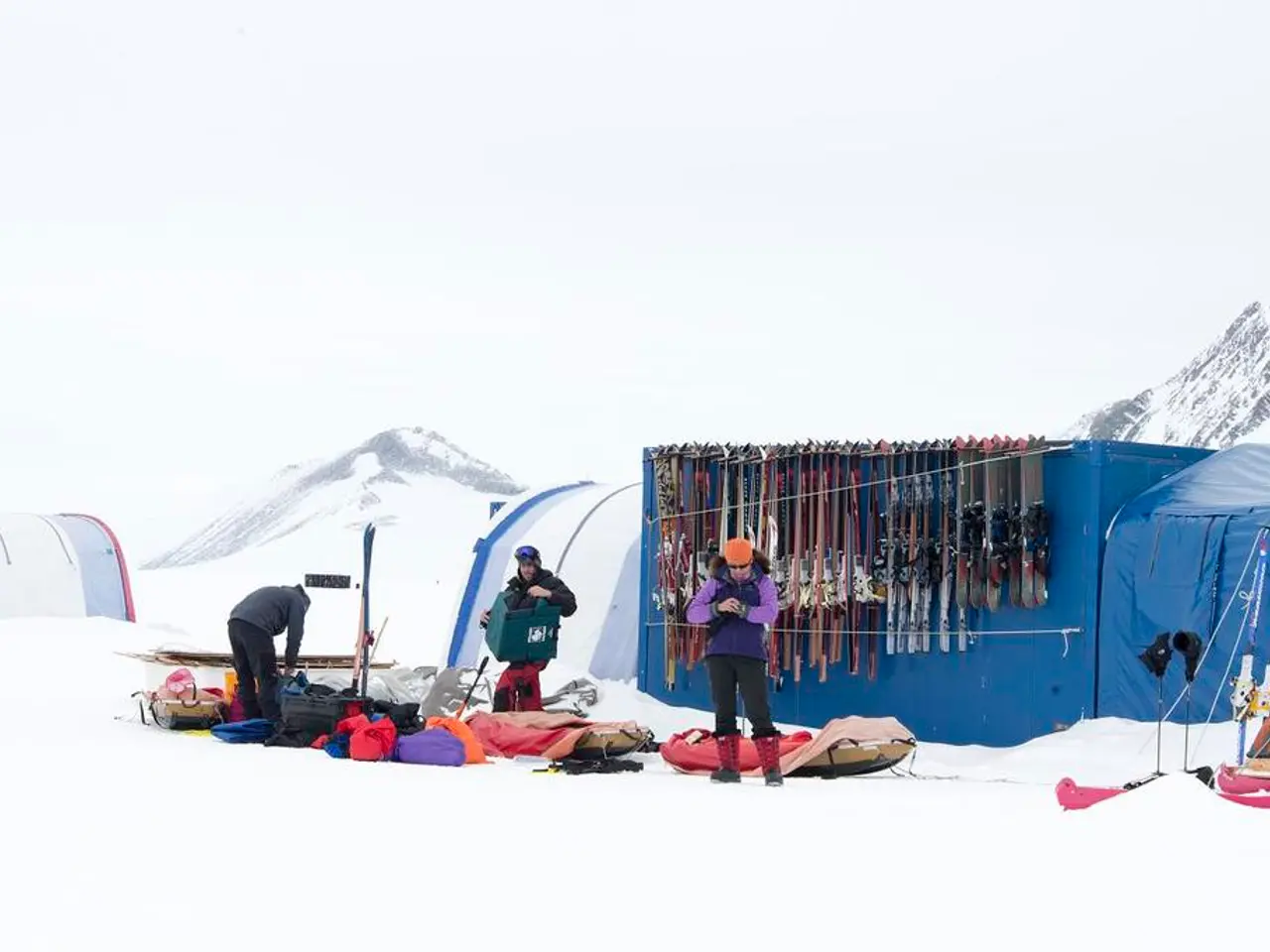Treading on precarious grounds
In the cold winter months, the Düsseldorf fire department takes a special focus on ice rescue operations, particularly their diving squad. As the waters in Düsseldorf begin to freeze, the team puts their training into practice.
The city's fire department is responsible for practical ice rescue training, using "ice ladders" as a crucial tool. These three-and-a-half-meter-long, signal-yellow painted wooden ladders are provided at urban water points like Kaiser Pond and Ko-Graben for quick rescue. They can aid self-rescue if someone falls through the ice, but it's important to remember that ice is never 100% safe.
The ice ladders are valuable rescue tools, helping a person climb back onto the ice by providing grip and leverage. However, they should always be used with caution. It's essential to carry ice picks or claws along with ladders as self-rescue equipment and to use ladders only on stable ice, with someone nearby to assist in emergencies.
To ensure safety during ice outings, particularly when children are involved, strict supervision, education about ice dangers, and using safety tools like ice ladders properly are key. Children are particularly at risk during such outings due to underestimating the dangerously thin ice. They have little chance of survival after two minutes in icy water.
To prevent accidents, it's crucial to check ice thickness regularly, avoid ice if conditions are unknown or not monitored, and stay away from areas known for thin ice or where ice conditions change frequently. If a fall through ice occurs, remain calm, use survival techniques to get out safely, and call for help immediately.
The Düsseldorf fire department conducts practical ice rescue training on the city's ponds and lakes. The removal of "ice ladders" is considered a criminal offense, and the department practices ice rescue procedures as ice forms on these bodies of water.
In February 2003, a tragic incident occurred at Kaiser Pond when a 9-year-old boy nearly drowned after falling through the ice. The ladder had been removed, and a witness tried to rescue him without the aid. This incident underscores the importance of proper ice safety measures and the use of safety tools like ice ladders.
In summary, the best approach to ice outings is prevention through education and supervision, carrying proper safety gear (like ice ladders and picks), checking ice conditions frequently, and maintaining constant vigilance when children are present on or near frozen waters. By following these guidelines, we can help ensure a safer winter season for all.
Science plays a crucial role in health-and-wellness as it helps us understand the dangers of frozen water bodies and develop effective safety tools like ice ladders for fitness-and-exercise activities on ice. Regular use of ice ladders, coupled with caution and proper safety equipment, can significantly improve the safety of ice outings, especially when children are involved.




